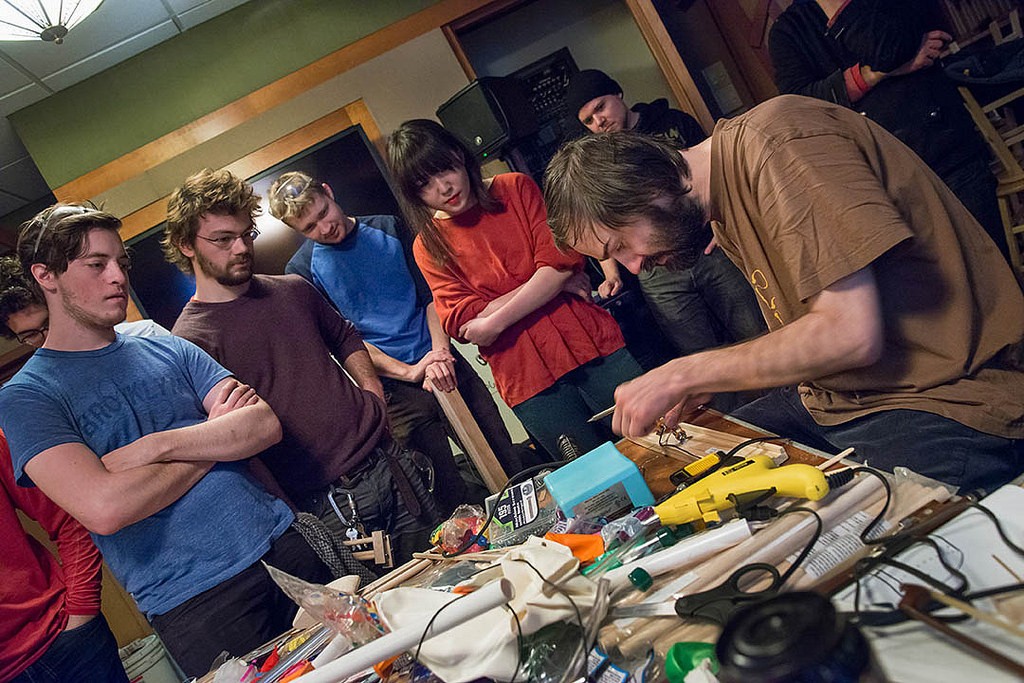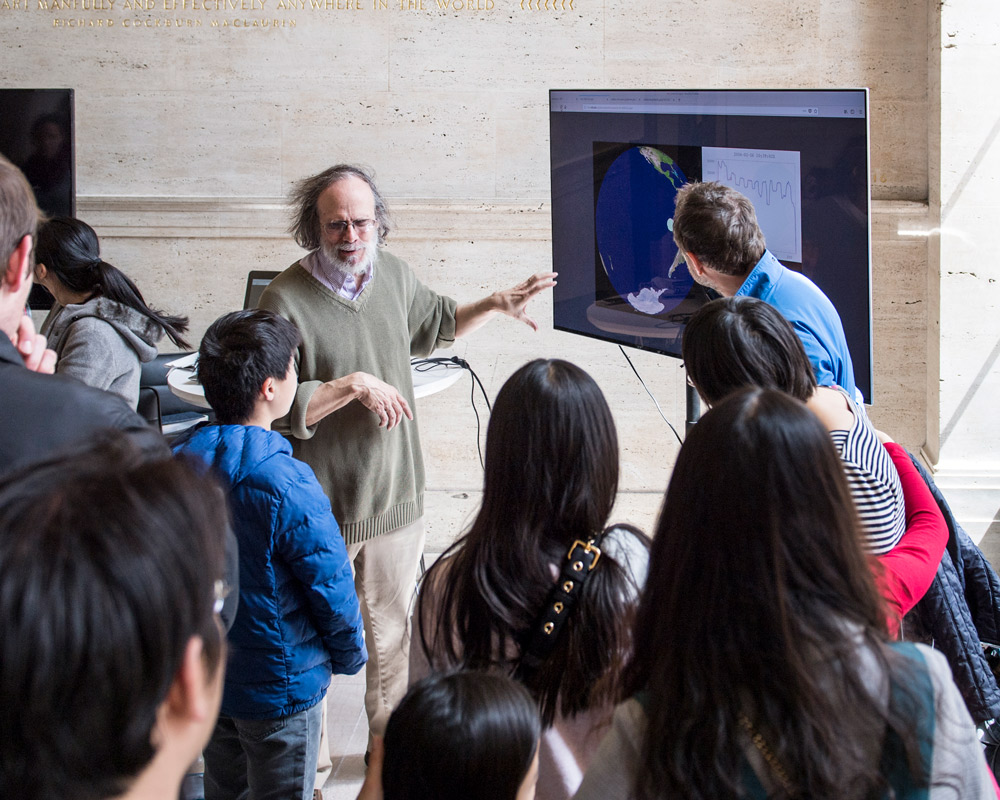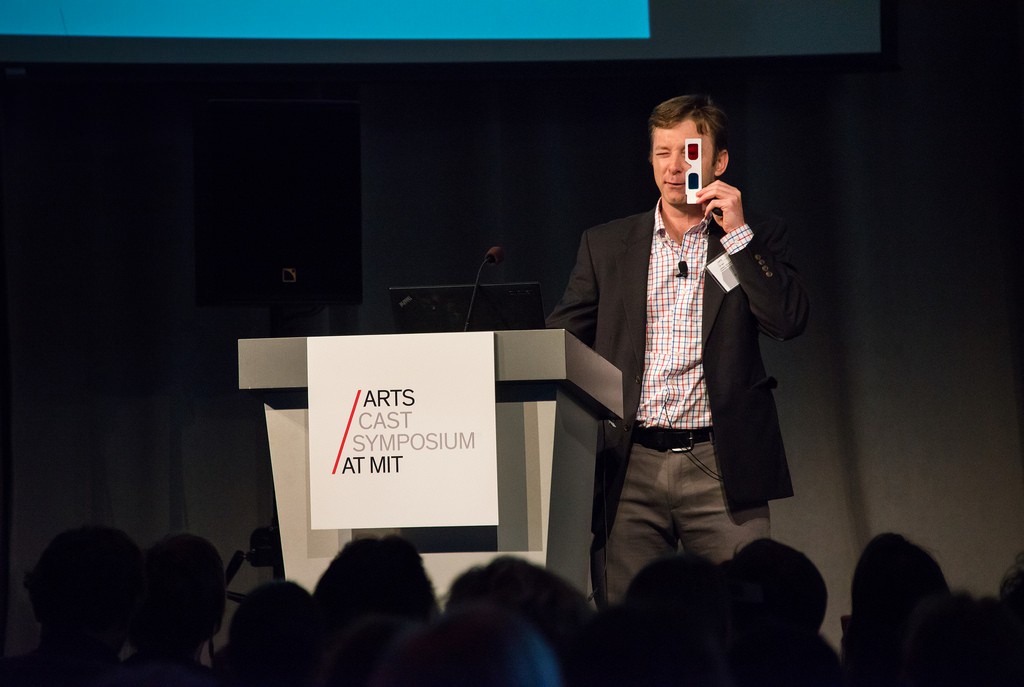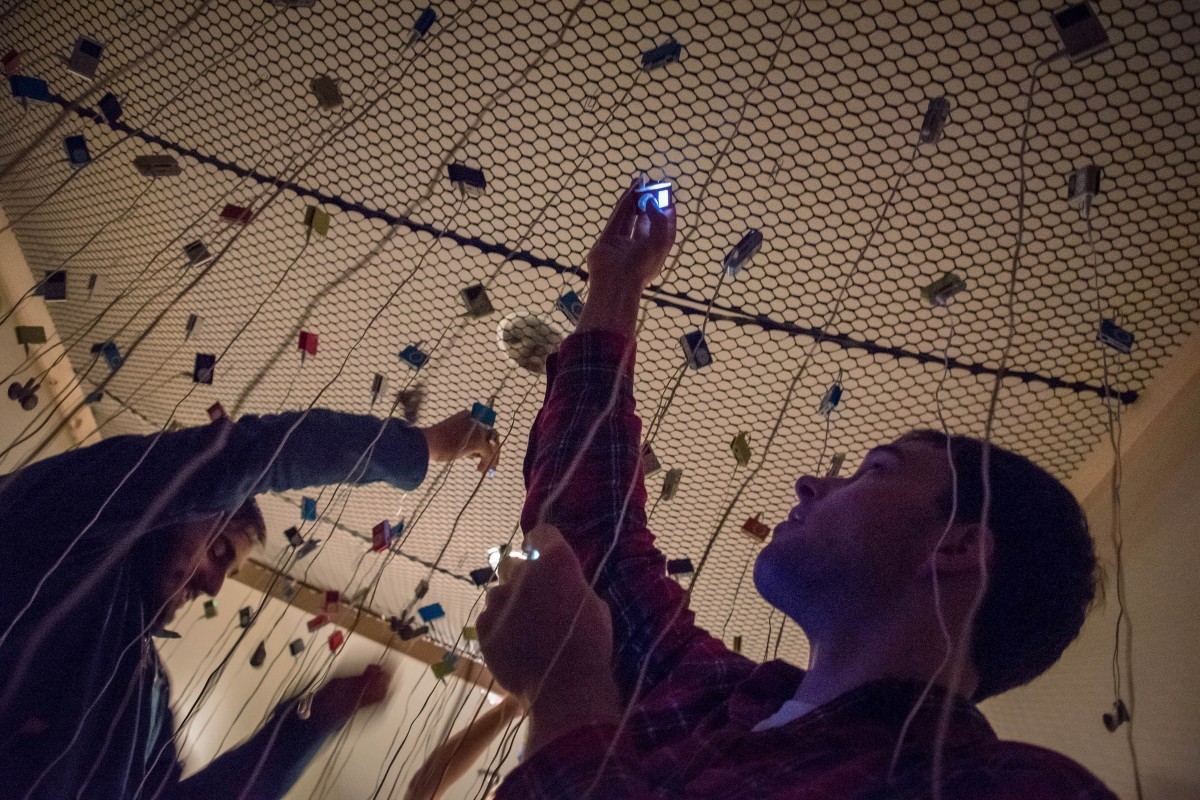$1.5M grant from the Andrew W. Mellon Foundation launches new Center for Art, Science and Technology at MIT
A new Center for Art, Science & Technology (CAST) is being established at MIT with support from a $1.5 million grant from the Andrew W. Mellon Foundation. A joint initiative of the Office of the Provost and the School of Architecture and Planning (SA+P) and School of Humanities, Arts, and Social Sciences (SHASS), the proposal was co-sponsored by Philip S. Khoury, associate provost and Ford International Professor of History; Adèle Naudé Santos, Dean of the School of Architecture and Planning; and Deborah K. Fitzgerald, Kenan Sahin Dean of Humanities, Arts, and Social Sciences. Evan Ziporyn, Kenan Sahin Distinguished Professor of Music, will serve as CAST’s inaugural director.
The Center will advance MIT’s leadership in integrating the arts into the curriculum and research of institutions of higher learning.
“MIT is arguably one of the only institutions that can combine internationally recognized excellence in science and engineering with a strong and deep heritage in design and the performing and visual arts,” Khoury says. “CAST will expand MIT’s commitment to ‘learning by doing’ and support the Mellon Foundation’s commitment to the creative arts and their educational value across the curriculum. We are tremendously grateful to the Mellon for providing crucial support for this effort.”
The grant will provide awards to faculty, researchers and curators seeking to develop cross-disciplinary courses, new research or exhibitions that span the arts, science and technology. Mellon funds also will supplement MIT’s existing Visiting Artists program. The goal will be to embed artists’ residencies in the curriculum and create a platform for collaboration with faculty, students and research staff in the development, display and performance of new and experimental artwork or technologies for artistic expression. In addition, the grant will support the participation of graduate students and postdoctoral fellows in the activities of the Center.

To enhance the array of Mellon-supported activities and in order to broadly disseminate the work of the Center, the associate provost and deans of SA+P and SHASS will fund a major, biennial international symposium on art, science and technology. The first one will take place during the 2013-14 academic year.
“MIT has a great legacy in this domain,” Santos says. “MIT created the first architecture program in the country and is today a leader in new forms of design and digital fabrication; the Center for Advanced Visual Studies, founded by György Kepes in 1967, established a model for collaborations among artists, scientists and engineers; and the Media Lab is internationally renowned for pioneering efforts in the fields of design, media arts and electronic music.”
Khoury, Santos and Fitzgerald share the goal of strengthening the role of the arts at MIT and offering a model for other universities seeking to integrate exploration in the arts with scientific and technological inquiry.
Nearly three quarters of students enter MIT with advanced skills in the arts, along with extraordinary aptitude in math, science or engineering, and the Institute has long recognized the role of the arts in educating scientists and engineers and fostering a genuinely creative culture on campus.
Fitzgerald notes, “The Institute has developed a renowned Music section (including the conservatory-level Emerson Scholars Program), an innovative Theater Arts program, a leading Comparative Media Studies program, and a literary arts faculty of international reputation. We are committed to a culture where the arts, science and technology thrive as interrelated, mutually informing modes of exploration, knowledge and discovery.”

As CAST’s director, Evan Ziporyn will work closely with a faculty advisory committee and Executive Director of Arts Initiatives Leila Kinney to implement the Center’s mission and activities. Ziporyn, a professor in the Music and Theater Arts Section, has developed and spearheaded residencies by numerous artists during his 22 years at MIT, including an ongoing three-year residency by the innovative music ensemble Bang on a Can All-Stars, which began in the 2010-11 academic year and will continue through the spring of 2013.
“The arts are an integral part of the MIT experience, for students and for the community as a whole,” Ziporyn observes. “And the MIT environment is an ideal one for arts in the 21st century, both as a breeding ground for creative talent and as an intellectual milieu. I’ve repeatedly seen the life-changing effects that close contact with master artists in residence can have for students, even if their primary field isn’t in the arts. The residencies of the past several years — Gustavo Dudamel, Bang on a Can, Robert Wilson, to name just a few — have had an enormous impact on campus life; they are good examples of what we hope to accomplish with CAST.”
CAST seeks to sustain and build upon the visibility and momentum generated by FAST, the Festival of Art, Science and Technology held in Spring 2011 as part of MIT’s 150th anniversary celebrations — directed by Tod Machover, the Muriel R. Cooper Professor of Music and Media at the MIT Media Lab — as well as the publication of a comprehensive report on “The Arts at MIT” by the Office of the Provost on June 28, 2011. Four years of support from the Mellon Foundation will allow the Center to become established as a catalyst for multidisciplinary creative experimentation on campus.
CAST will be housed in the Office of the Provost. Provost L. Rafael Reif welcomed the Center, saying, “The arts today are embedded in new media and innovative technologies. Many of our students have an exceptional blend of creativity and technical proficiencies and are poised to lead the creative industries of the future, or will lead other fields with the flexible and innovative thinking learned from deep engagement with the arts. As one of the world’s leading research universities focused on science and technology, MIT should also be at the forefront of developing ambitious, technically advanced and socially significant art, design and performance.”



